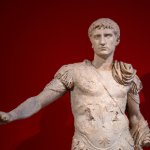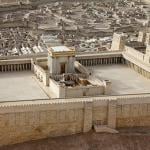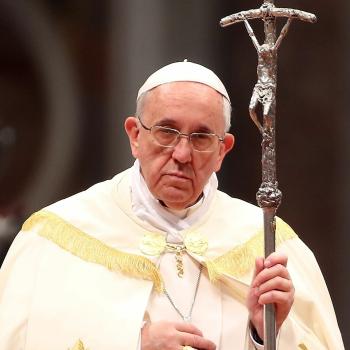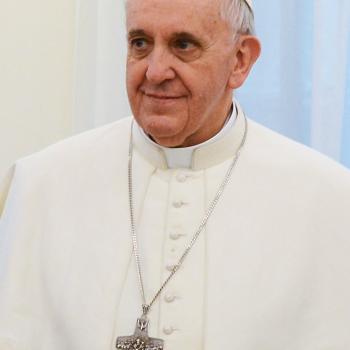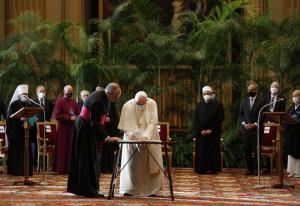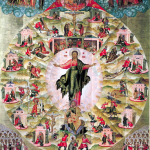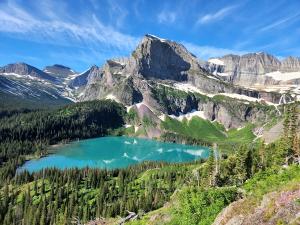
The United Nations Educational, Scientific, and Cultural Organization (UNESCO) recently released an ominous report on a lesser noted effect of global warming. Around the world, mountain glaciers are retreating, threatening the future livelihood of billions of people. Previously I wrote on another report that fourteen years ago made exactly the same point. “The Fate of Mountain Glaciers” was authored by a consortium of scientists known as the Pontifical Academy of Sciences. Hardly any Catholics – nor anyone else – are aware of this report or know that the Pope has an academy of sciences. Or that Benedict XVI, pope at the time of this report’s release, has the reputation of “the green pope.”
Whether from the United Nations or the Vatican, it’s incumbent on us all to listen to what science says about the way our climate is changing. And the ways global warming affects people’s lives for the worse. One of those ways is through the gradual disappearance of the glaciers.
Shrinking Glaciers
We experience first-hand the effects of a warming world– weather extremes of both storms and drought, heat waves, shorter winters, and longer fire seasons. And then there’s shrinking glaciers. UNESCO tells us that retreating glaciers “threaten the food and water supply of 2 billion people around the world.” (March 20 article in the London Guardian Newspaper) The report also mentions the long-lasting drought in the Colorado River Basin. In Montana, where I spent 11 summers, the St. Mary River flows from Glacier National Park to irrigate farmland all across the state’s North. On road signs in the park, I saw graphic depictions of how the park’s glaciers have shrunk over the years. In one way or another we all are connected, more or less, to the world’s mountain glaciers, UNESCO warns.
Warnings also came from the World Meteorological Organization in its most recent State of the Climate report: Loss of glacier mass is quickening. The past three years saw the largest reduction over any similar time span on record. The Scandinavian countries and the tropical Andes are among the most affected. Glacier mass in Eastern Africa and the Alps and Pyrenees have declined by 40 to 80 percent. (Article in the Guardian again)
Evidence for global warming
The Pontifical Academy’s report sees in glacier loss “some of the clearest evidence for a change in the climate system.” That change has happened “on a global scale at a rapid rate” and has contributed “significantly to sea level rise.”
The authors of the pontifical report respond to climate skeptics. Well-understood natural systems cause variations in earth’s climate, they say. But these changes occur at timescales of 10,000 years or longer. By contrast, the observed human-induced changes in carbon dioxide, other greenhouse gases, and soot concentrations are taking place on 10-100 year timescales – at least a hundred times as fast.
The report adds that this human-caused warming is happening as earth is already at one of its cyclical temperature maximums.
What to do, and undo
The report of the Pontifical Academy of Science reports a startling figure:
Human-caused changes in the composition of the air … result in more than 2 million premature deaths worldwide every year…. {They] threaten water and food security – especially among those ‘bottom 3 billion’ people who are too poor to avail of the protections made possible by [industrialization].
Consequently, the authors urge us to:
- “Reduce worldwide carbon dioxide emissions without delay…. All nations must focus on a rapid transition to renewable energy sources.” They also need to stop deforestation and promote reforestation. Developing and deploying technologies for removing carbon dioxide from the air will also be necessary.
- Reduce air pollution to prevent “millions of premature deaths from respiratory disease and millions of tons of crop damages every year.”
- Prepare for those climate changes that we will not be able to avoid.
Worthy of note
The pontifical document links air pollution and climate change as two parts of the same problem. Both are death-dealing – air pollution, by the millions, today; climate change by potentially a similar amount, tomorrow. Importantly, both issues have one major cause in common – the consumption of fossil fuels.
On the issue of climate change the documents speaks clearly of moral obligation:
Failure to mitigate climate change will violate our duty to the vulnerable of the Earth, including those dependent on the water supply of mountain glaciers…. Our duty includes the duty to help vulnerable communities adapt to changes that cannot be mitigated.
“Time is short,” the authors warn. “Warming and associated effects in the Earth System caused by cumulative CO2 emissions … may soon become unmanageable.”
That was an authoritative judgment of 14 years ago. Since then greenhouse gases continue to increase in the atmosphere. And worldwide temperature records fall so consistently as not to be news anymore. Except for last year, which for the first time broke through the limit of 1.5 degrees Celsius that nations set as the hoped-for limit of global warming. That was only one year, and we’re looking at longer trends. But the longer trends are equally dire. Of the last ten years every single one has been hotter than any previous year on record.
My Catholic religious community speaks with authority and wisdom on many issues, including the environment. It’s time for the Church’s ecological wisdom to be a lot less silent.


